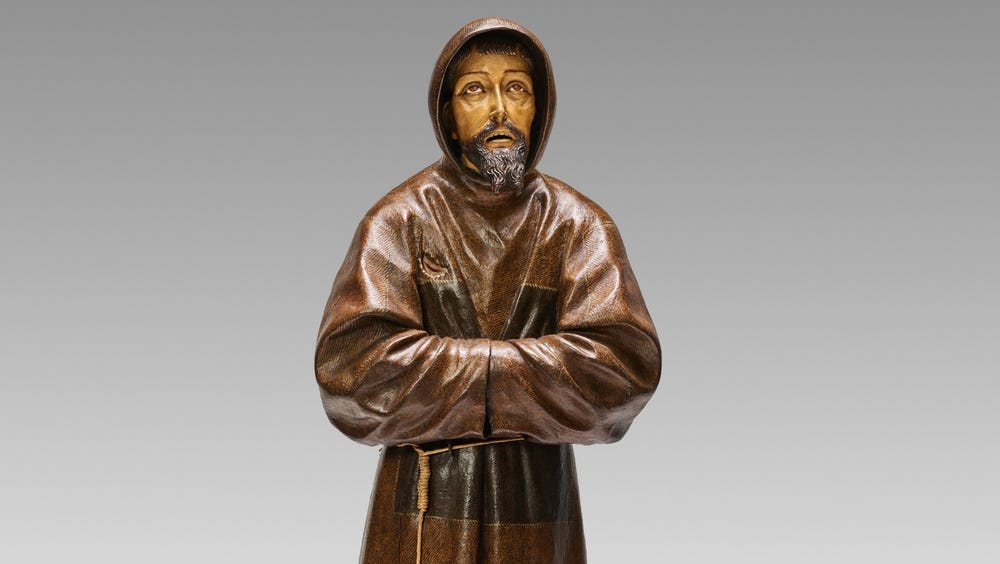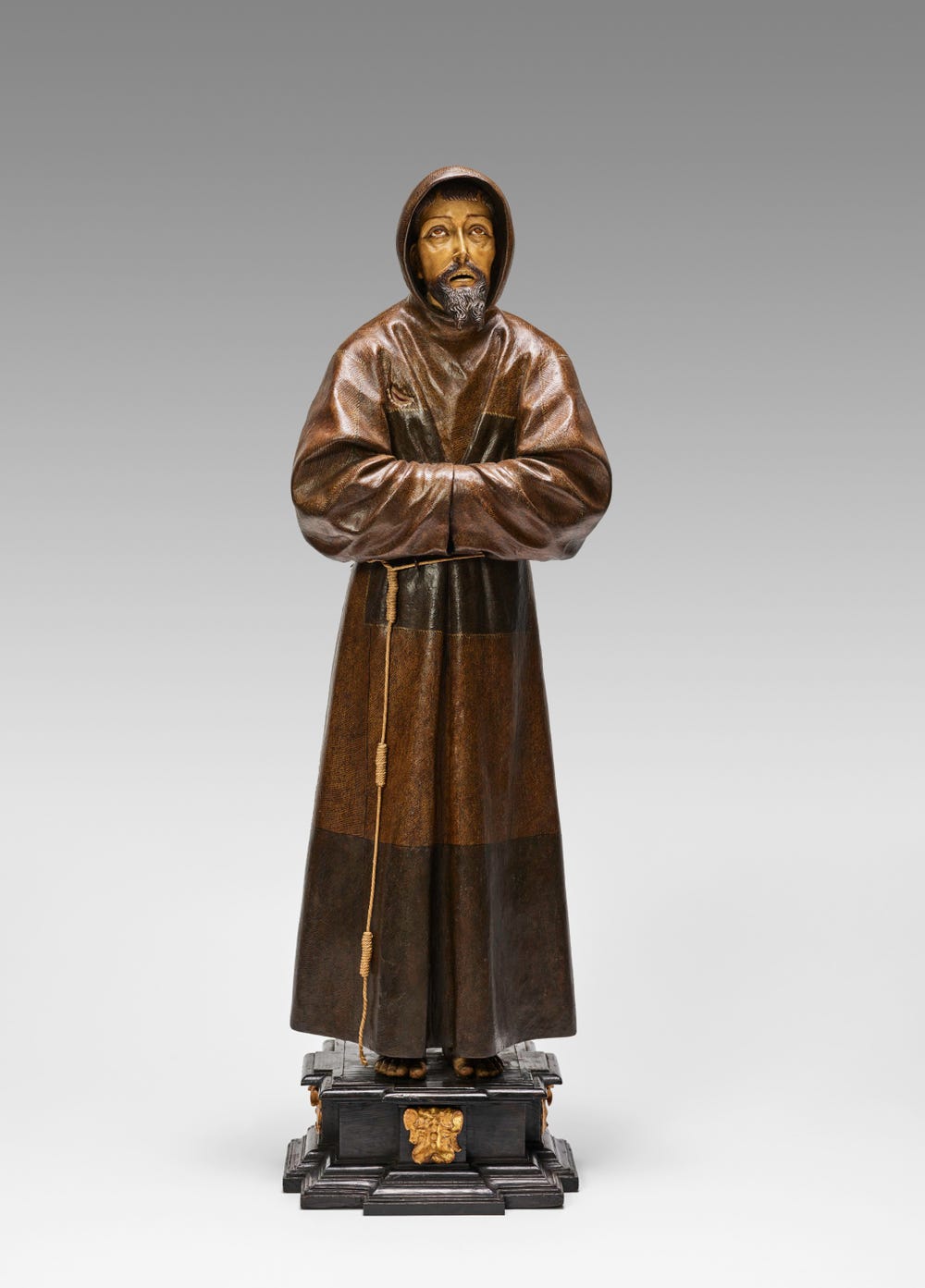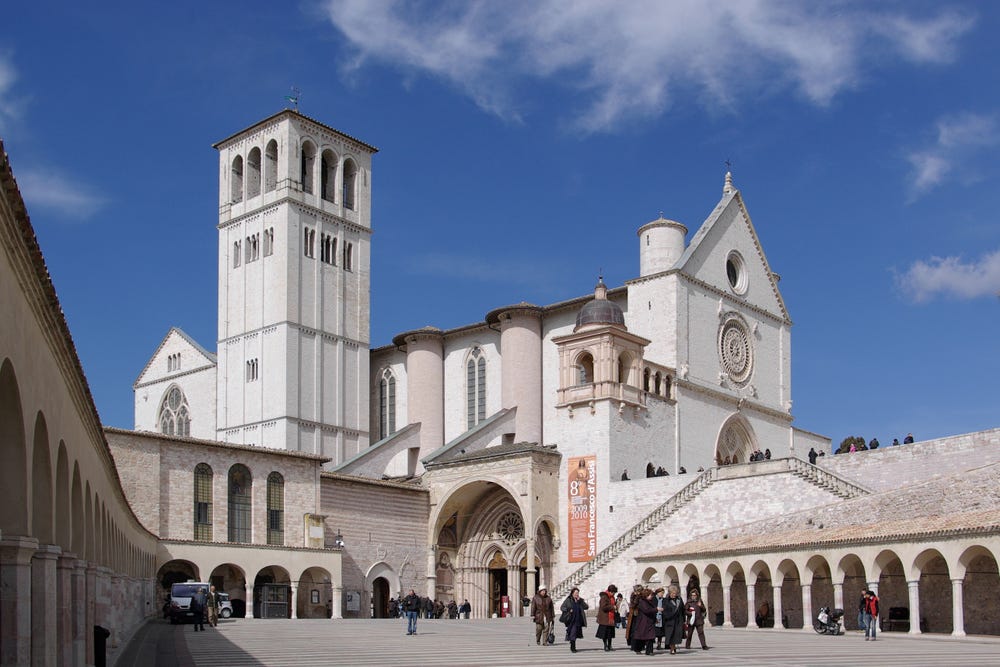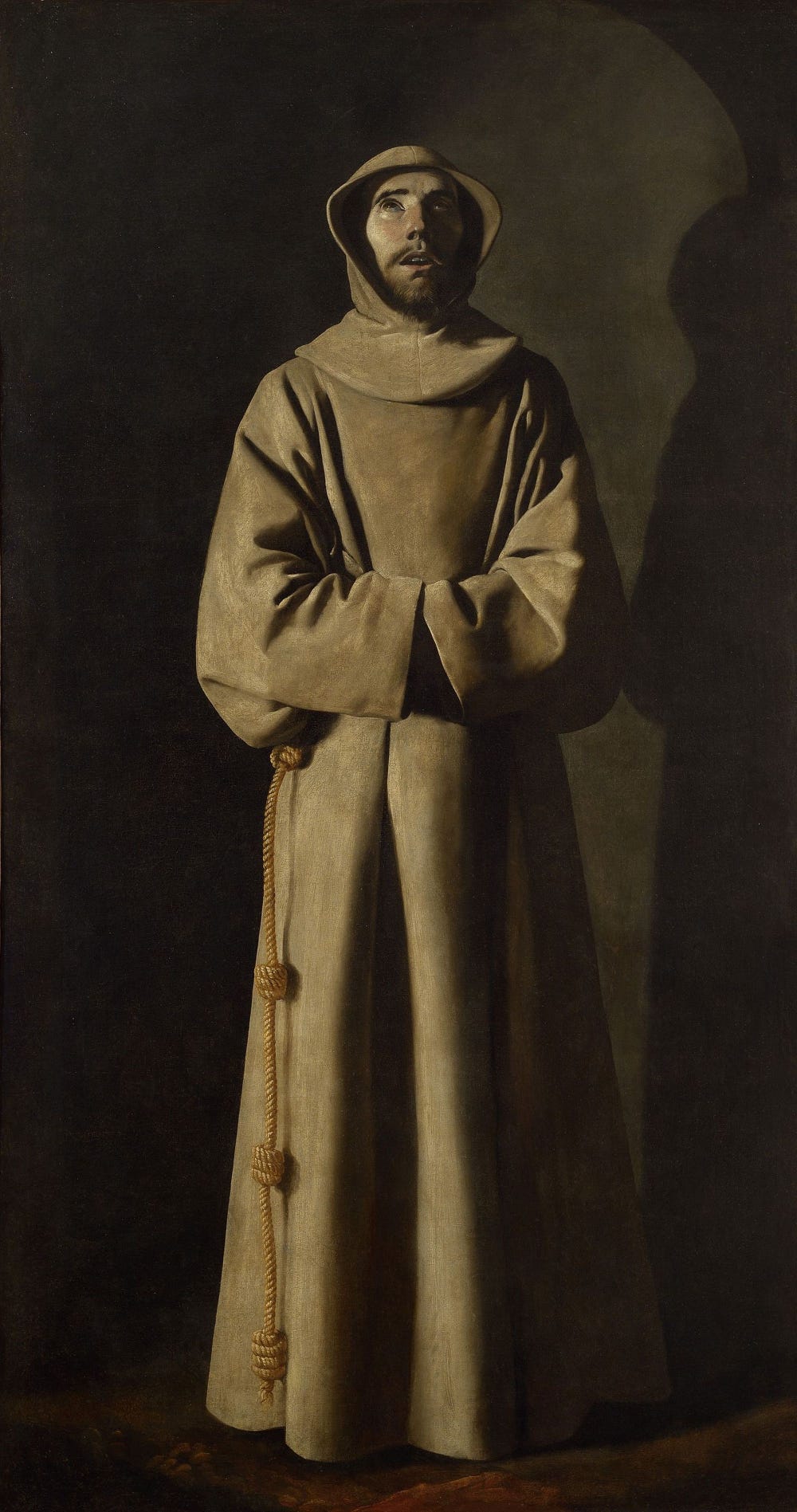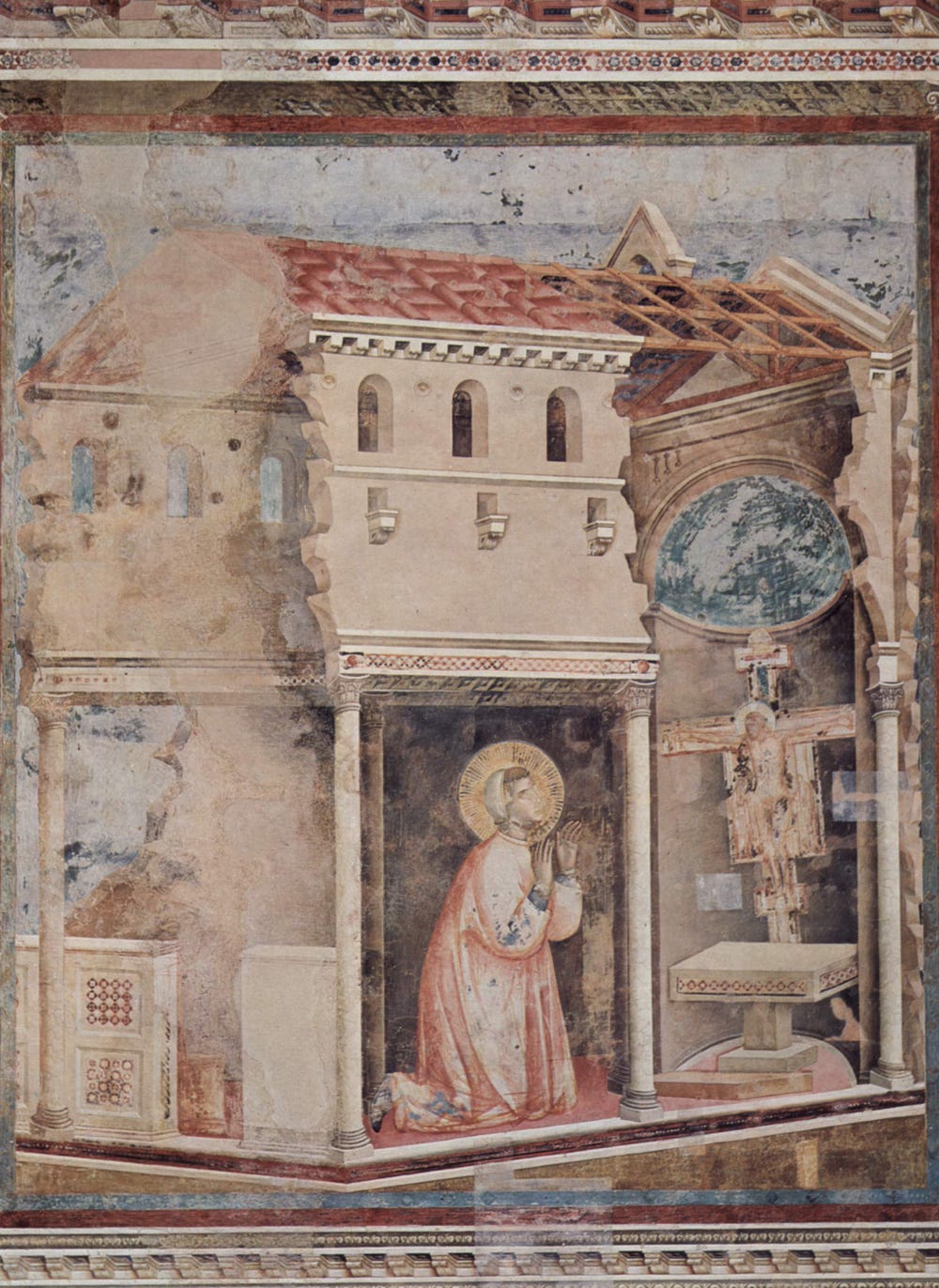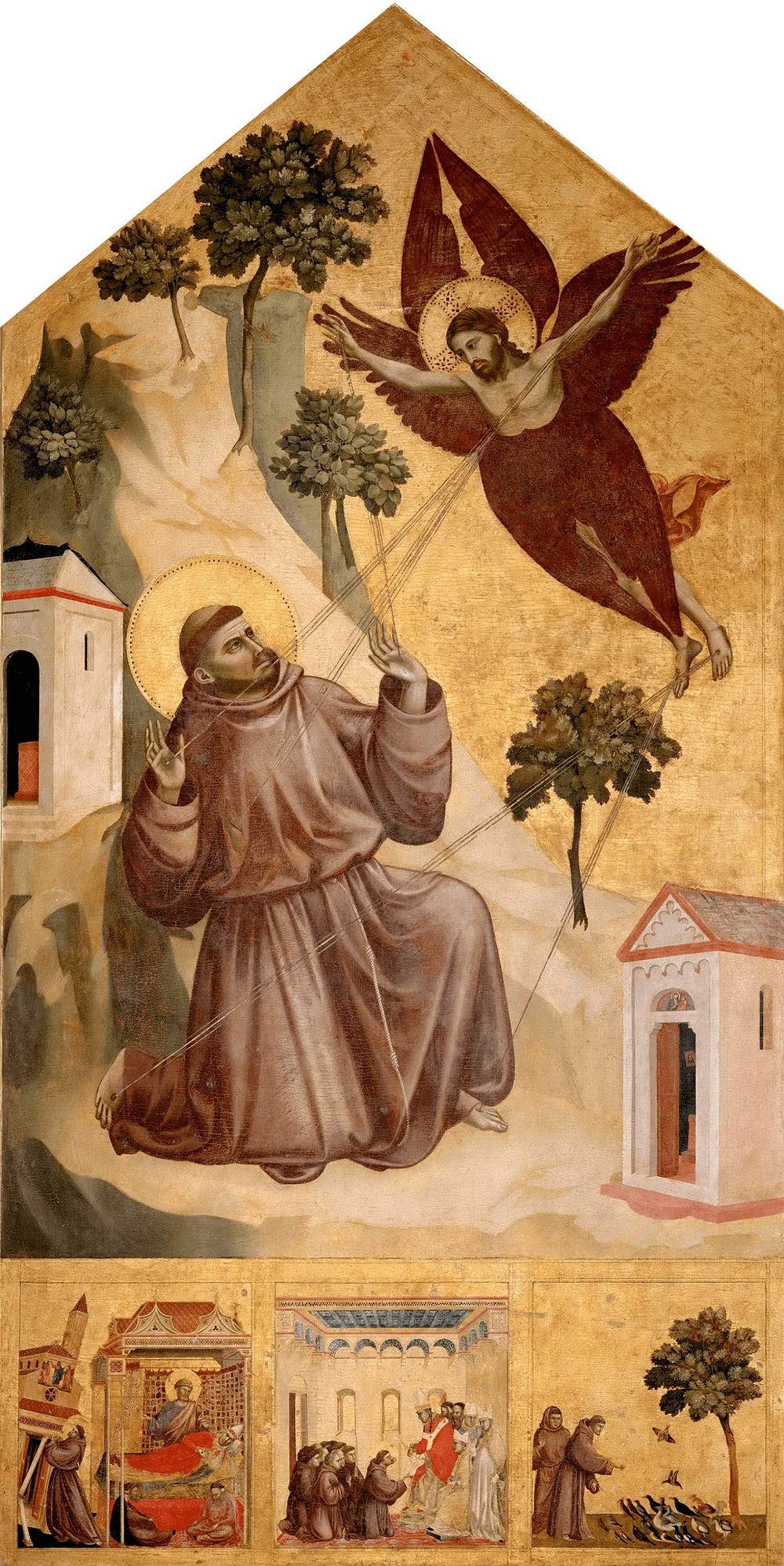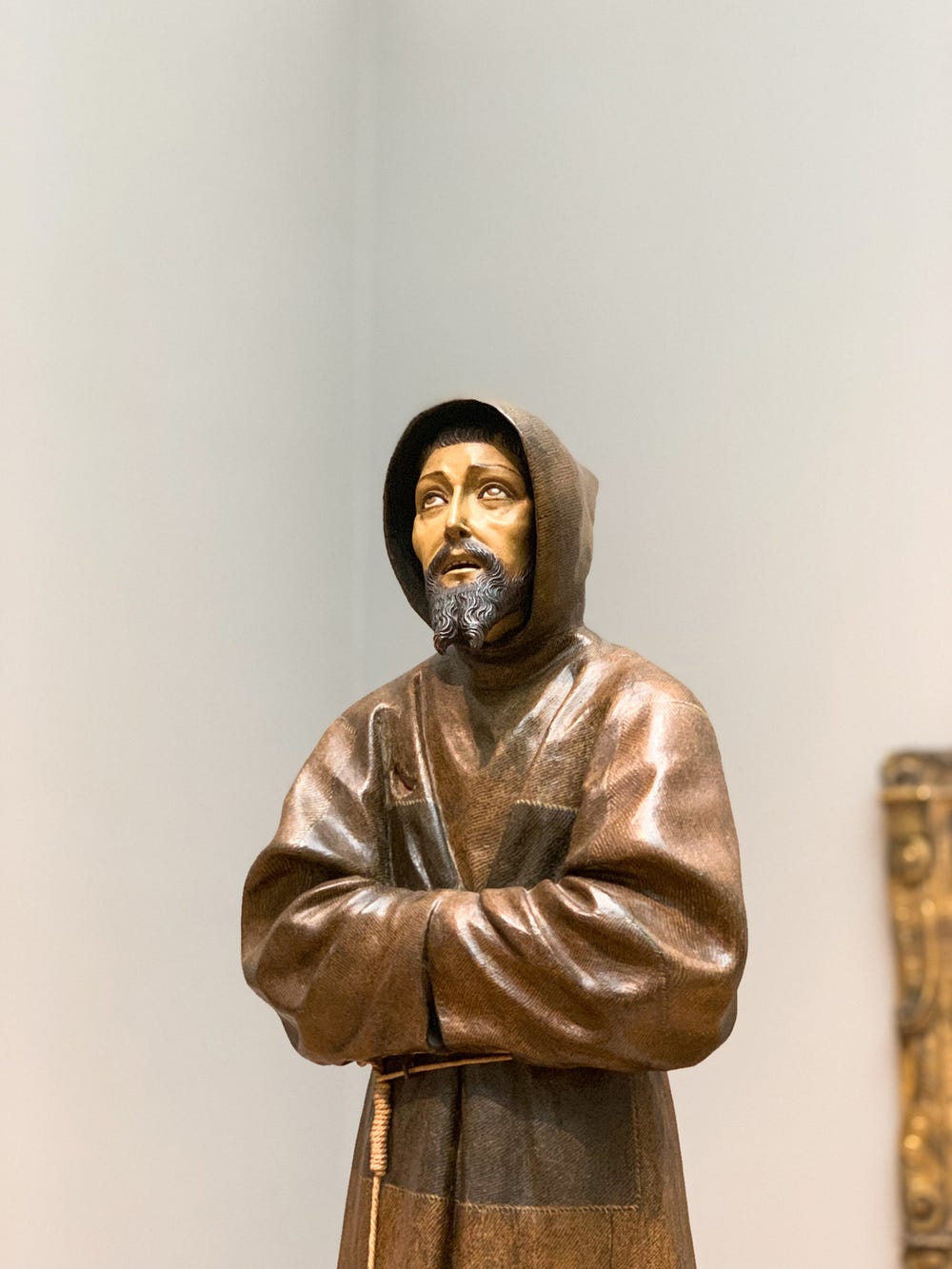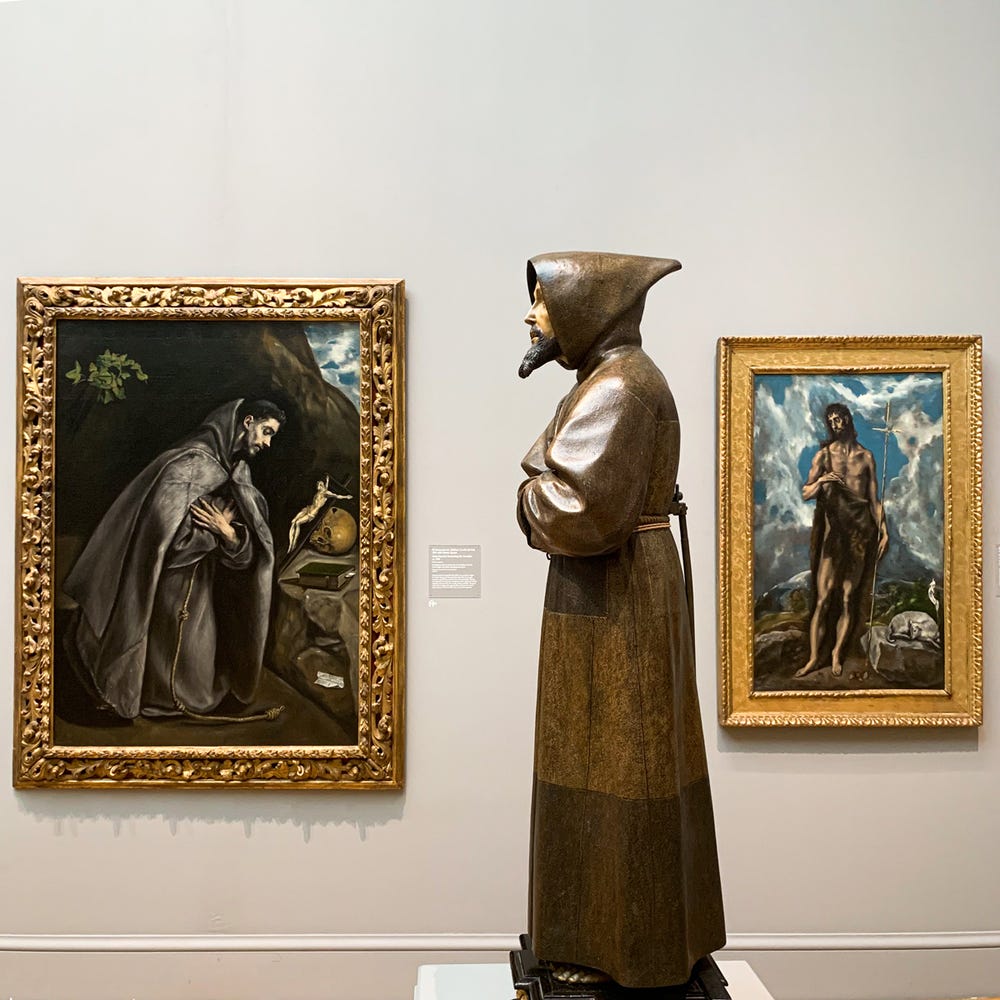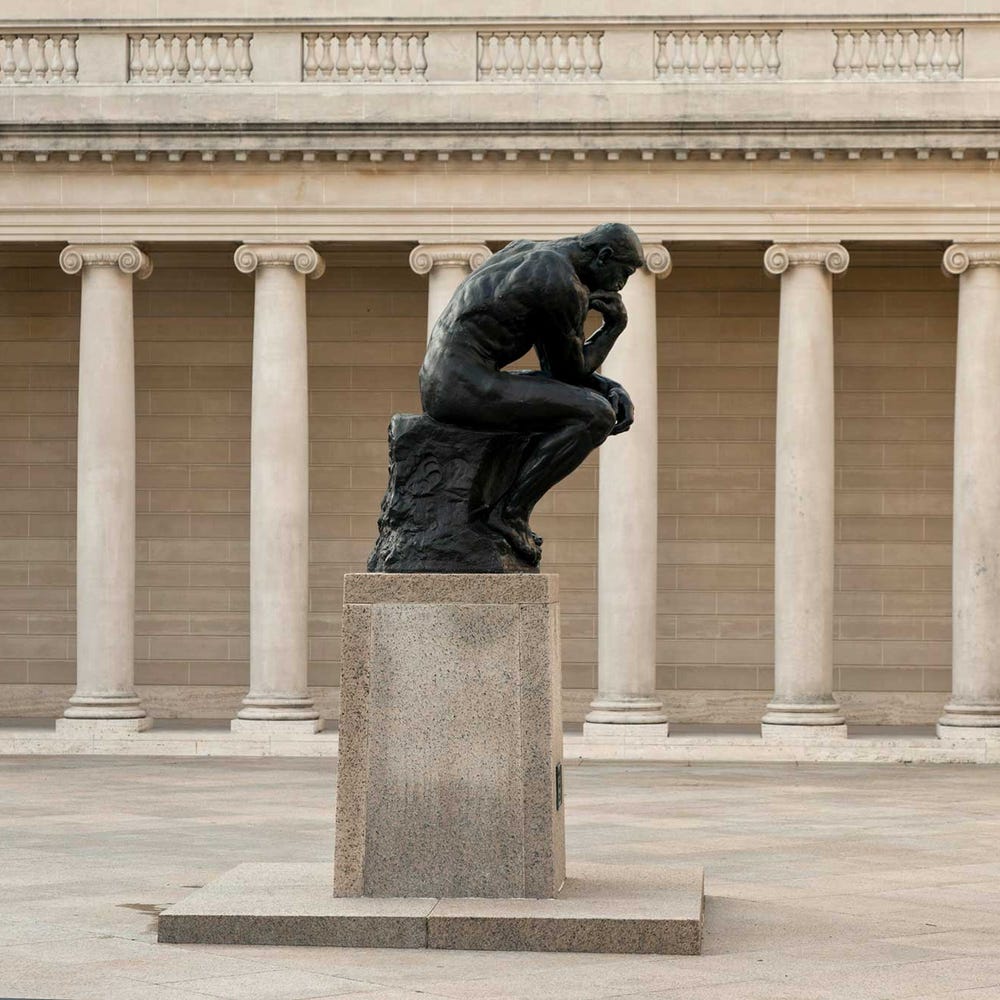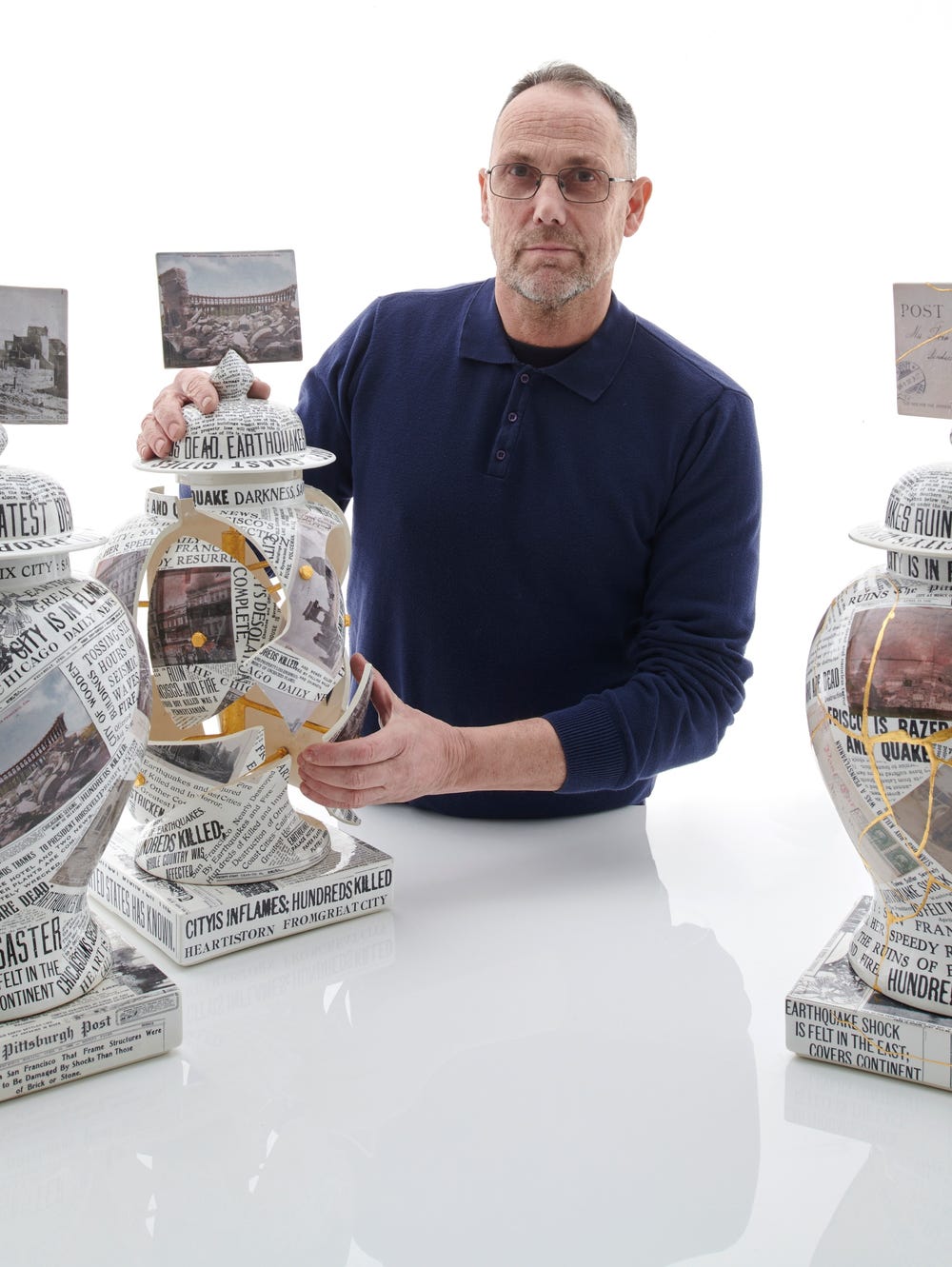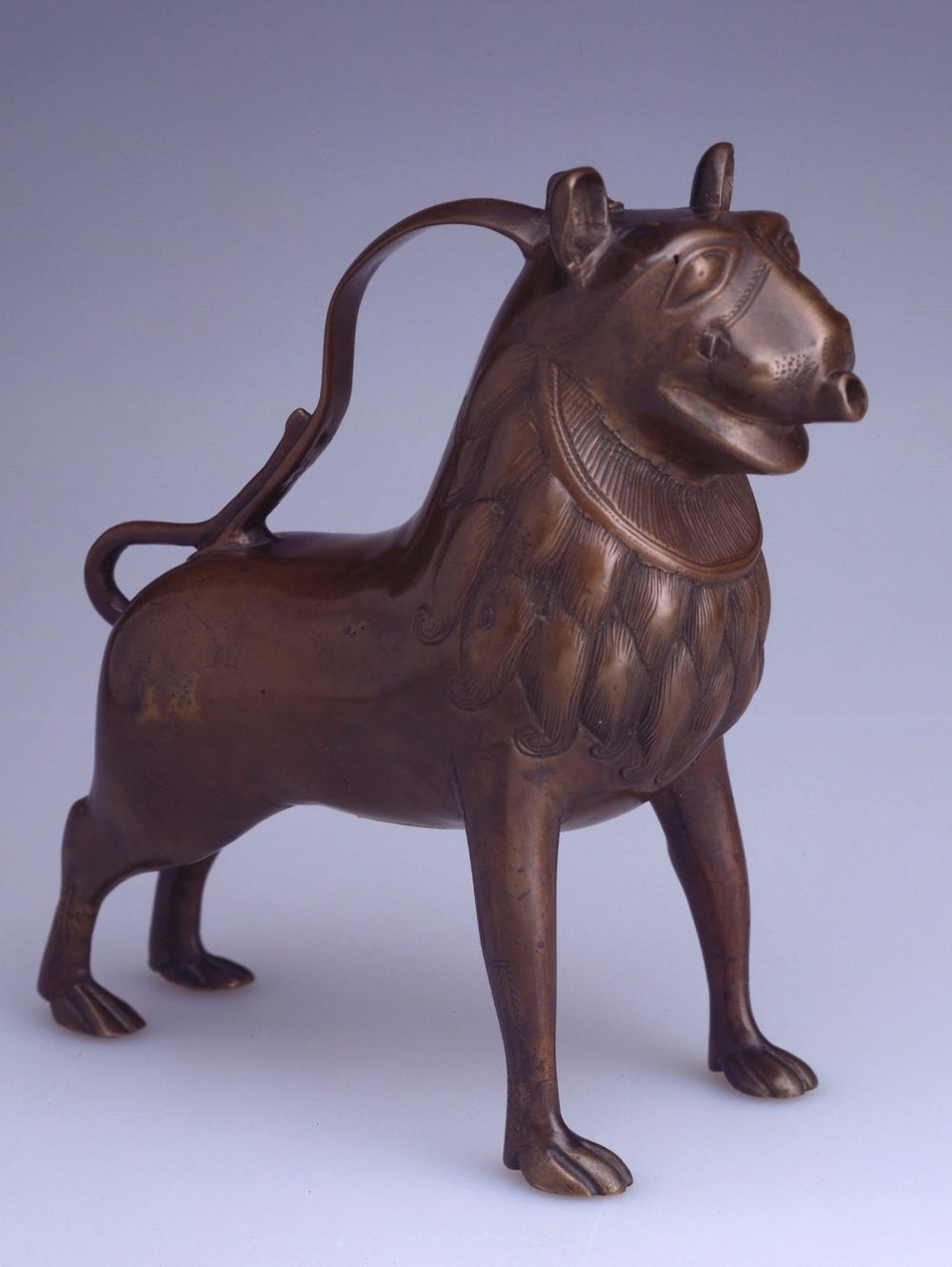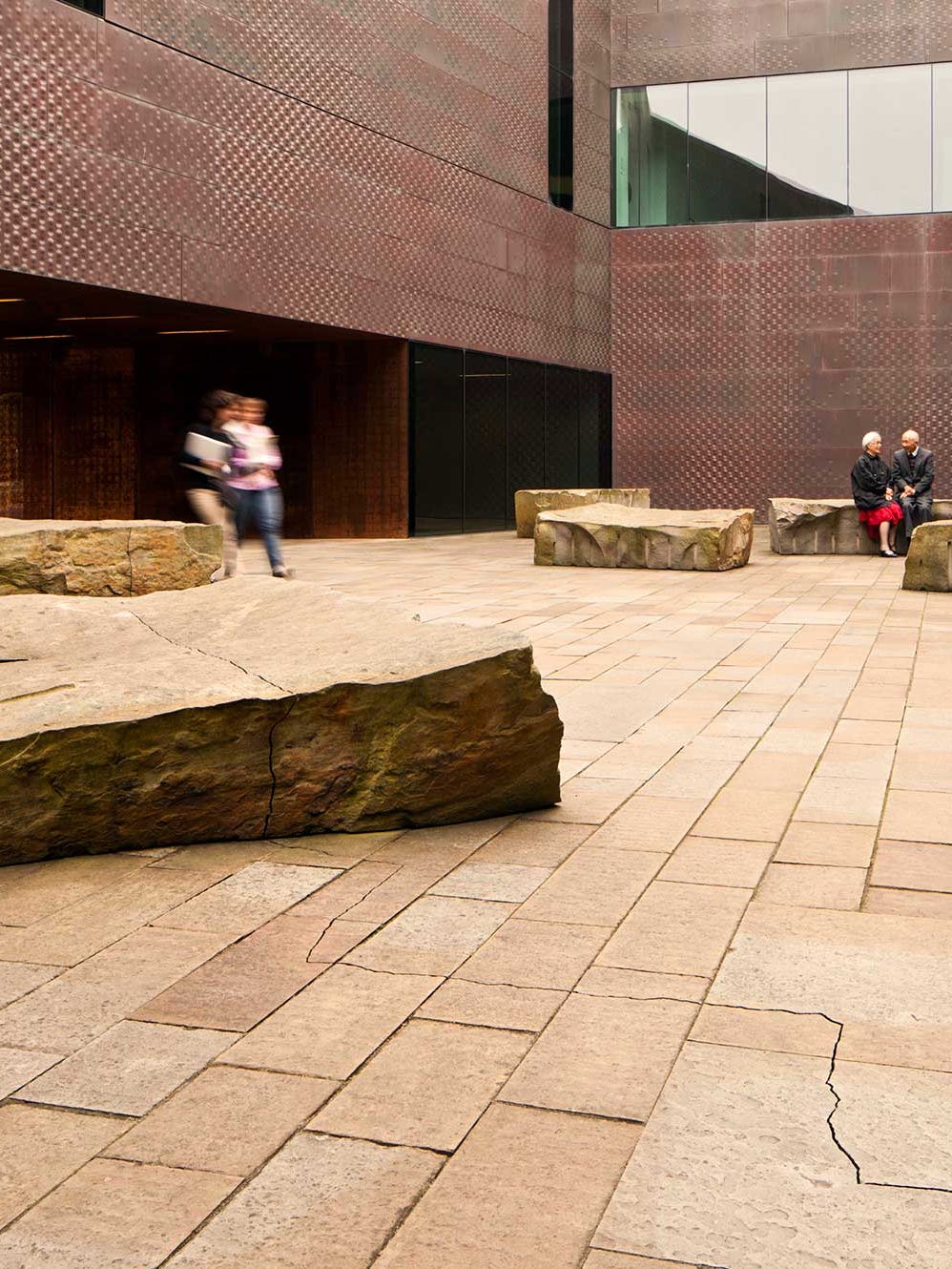Virtue and Humanity: A Meditation on the Life of Saint Francis of Assisi in Light of the Coronavirus Pandemic
By Thomas Wu
April 28, 2020
In April 2018, the Fine Arts Museums acquired a compelling polychrome wooden sculpture of Saint Francis of Assisi. Attributed to Spanish sculptor Bernardo del Rincón (1621–1660), this devotional figure depicts the saint with his key attributes: a rough patchwork robe; a rope belt with three knots, or cingulum; and a wound, or stigma, on his right breast.
Bernardo del Rincón, Saint Francis, ca. 1650. Polychrome wood, glass, and rope, height 43 ½ in. (110.5 cm). Fine Arts Museums of San Francisco, Museum purchase, Gift of Bank of America, by exchange, 2018.20
More specifically, the sculpture depicts Francis as described in a fifteenth-century account of Pope Nicholas V’s visit to the saint’s tomb beneath the Basilica di San Francesco in Assisi (below). According to the account, Francis’s body was discovered intact, standing and hooded, its eyes turned heavenward, hands concealed, and stigmata bleeding as though freshly inflicted.
Basilica of Saint Francis of Assisi, 14th century, Assisi, Italy
The sculpture strongly resembles contemporary Spanish depictions of Saint Francis, such as Zurbarán’s painting in the Musée des Beaux-Arts in Lyon (below). Yet such devotional images produced during the Counter-Reformation of the late sixteenth and seventeenth centuries were meant not only to be identifiable, but also to elicit emotion and contemplation. In the present day, people of all religious backgrounds, or of none, can still find meaning in the iconographic symbolism, as well as the graphic realism, of this quietly powerful object.
Francisco de Zurbarán, Saint Francis of Assisi, ca. 1650–1660. Oil on canvas, 77 ½ x 41 ¾ in. (197 x 106 cm). Musée des Beaux-Arts de Lyon, A115
In times of trial, such as the present coronavirus pandemic, historical examples of perseverance can offer guidance and comfort. During his lifetime, Saint Francis embodied and preached sacrifice, endurance, and optimism—virtues upon which our individual and collective ability to bear and overcome the pandemic depend in great measure. This meditation will briefly touch upon aspects of the sculpture in tandem with challenging, defining episodes in the life of Saint Francis and the virtues that arose from them.
The sculpture’s dominant iconographic element is a plain, drab robe, which conceals Francis’s body. Patches of fabric are differentiated by contrasting shades of brown paint, while within each fragment, diagonal lines of light and dark brown convey the garment’s rough-spun texture. Ironically—or poetically—Saint Francis (ca. 1181–1226) began life as the self-indulgent son of a wealthy silk merchant based in Assisi. Around 1205, while praying at the Church of San Damiano, Francis heard the voice of God telling him to repair His church (this scene is depicted in a fresco in San Damiano, below). Misinterpreting God’s message as literal, he sold his father’s textiles in order to repair San Damiano. Furious, his father summoned him before the local bishop and threatened to disown him. Francis responded by disowning his father, returned his very clothes to him, donned a discarded robe, and went forth into the wilderness.
Attributed to Giotto di Bondone, Saint Francis in San Damiano, ca. 1300. Fresco, Church of San Damiano in Assisi, Italy
Like so many across the United States who face unemployment due to lockdown measures, and with it loss of income, a sense of purpose, and a certain future, Francis was faced with the prospect of losing his father’s provision, his identity as his father’s son, and the secure future he anticipated. In this defining moment, when the floor was removed from beneath his feet, Francis took a leap of faith, optimistic that all would be well.
An intriguing feature of the sculpture is the cingulum, made of real rope, that girdles the robe. Its three knots symbolize the vows of poverty, chastity, and obedience taken by Francis and the followers that soon joined him. Francis’s community of adherents, who would become the Order of the Friars Minor—or Franciscans—in 1210, as well as the female Order of Poor Clares in 1212, abandoned their worldly possessions and gave what little they had to those even less fortunate. The cingulum can be interpreted as emblematic of the Franciscans’ sacrifice and altruism.
Attributed to Giotto di Bondone, Saint Francis Receiving the Stigmata, ca. 1295–1300. Tempera on wood, 123 x 64 in. (313 x 163 cm). Musée du Louvre, Paris, INV. 309
Another defining moment in the life of Saint Francis occurred while he fasted before Michaelmas in 1224. On September 14, the day of the Feast of the Cross, he had a vision of an angel being crucified. The angel transferred to Francis the stigmata, the wounds of Christ: nails grew out of his hands and feet, while a lance wound appeared on his chest (this scene is depicted in the painting above). He bore these injuries, as well as blindness and the effects of prolonged self-deprivation, until his death in 1226 at the age of thirty-nine. The stigmata, perhaps Francis’s most significant attribute, are treated with discretion in Rincón’s depiction: the saint’s hands, as well as the tops of his feet, are concealed by his robe, while the lance wound is marked by a deep but neat incision in the robe and underlying flesh, as though to suggest that the stigmata were borne modestly out of genuine piety, rather than overtly displayed. The stigmata, then, embody the virtue of stoic endurance.
Perhaps more touching than the sculpture’s iconographic identifiers and the stories and virtues they represent, is its tangible humanity, achieved with a high degree of realism. The sallow hue of the figure’s skin, its drawn and pinched face, and its emaciated toes combine to illustrate a gaunt, sickly man. Perhaps the most striking element of the sculpture is a pair of glass eyes, liquid and eerily alive as they roll heavenward. This is no splendid icon to be venerated, but a convincing devotional image with which to commiserate. Yet despite the figure’s vitality, it is not theatrical: the robe falls neatly and is not excessively tattered, while the lance wound does not bleed profusely, staining the fabric; the nail punctures are hidden from view. Instead, subtle allusions to Saint Francis’s hardship become apparent after more intimate communion with the object.
Saint Francis on view at the Legion of Honor
The virtues or qualities that can be discerned in aspects of the figure—namely optimism, sacrifice, endurance, and humanity—can be observed widely during the coronavirus outbreak. Many have displayed sacrificial altruism by adhering to social distancing or providing vital services in spite of personal risk. Endurance, too, has been shown by many, be they patients, grieving families, doctors and nurses working around the clock, or others coping with isolation and anxiety. At the same time, the sculpture’s vivid, human frailty is a poignant reminder that, however stoically or selflessly people face the virus, we are only human.
More lighthearted associations can also be made between Saint Francis and our current predicament. As recently as 1979, he was named patron saint of ecology by the Catholic Church, due to his abiding love of nature, which has offered many Bay Area residents a respite from the confinement of their homes. Francis is also the patron saint of animals, with which many pet fosterers have enjoyed a symbiotic relationship during the crisis. Last and not least, he is the namesake and patron saint of San Francisco, established in 1776 by Spanish Franciscan missionaries. An age-old lesson exemplified by Saint Francis’s life, and a silver lining of the pandemic, is that adversity brings out the best in people.
Saint Francis on view at the Legion of Honor
Text by Thomas Wu, Curatorial Assistant, European Decorative Arts & Sculpture.
Learn more about European sculpture at the Legion of Honor.
Further Reading:
Brady, Ignatius Charles and Lawrence Cunningham. “St. Francis of Assisi,” in Encyclopaedia Britannica (Encyclopaedia Britannica, Inc., 2019), www.britannica.com/biography/Saint-Francis-of-Assisi.
